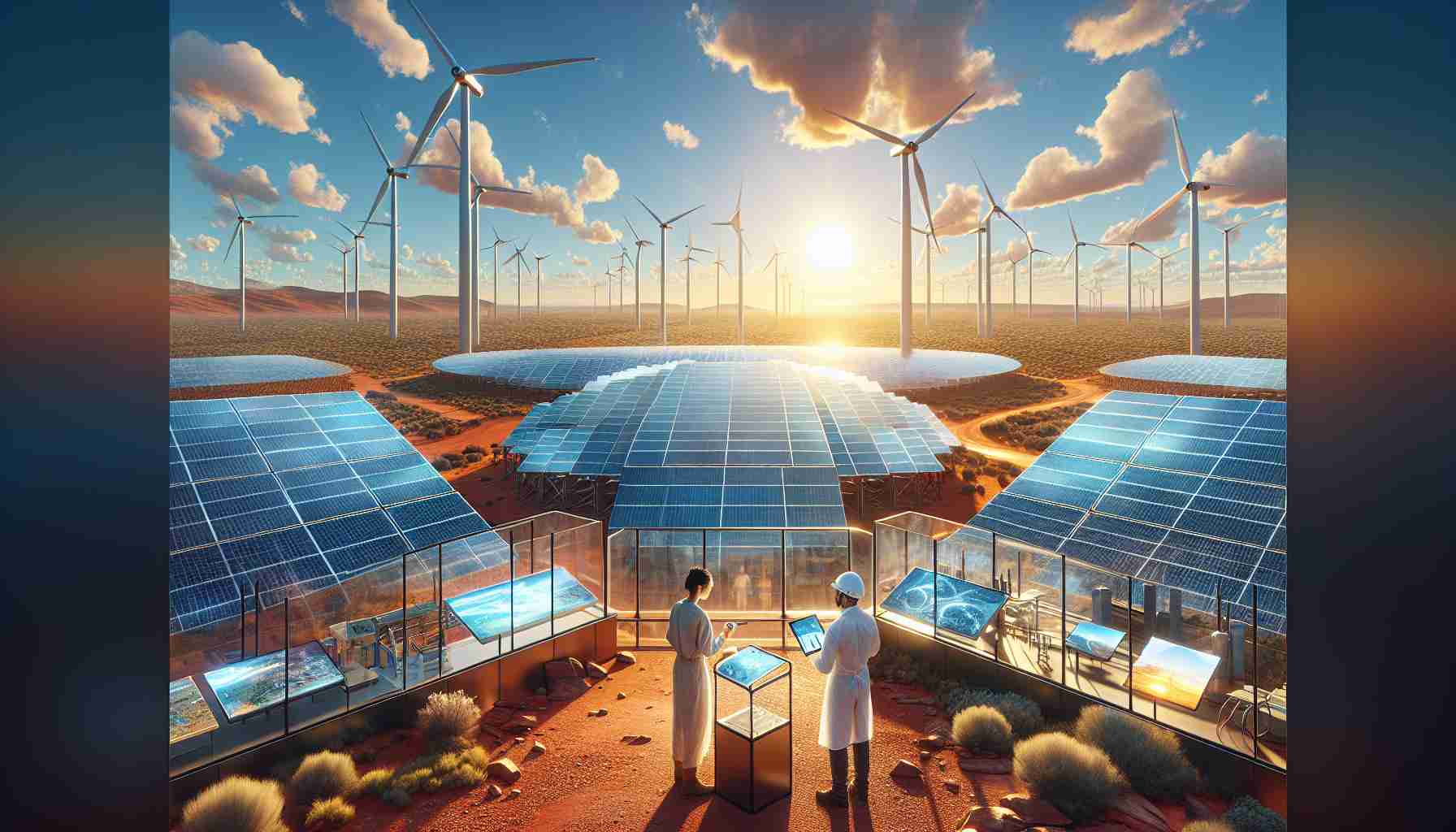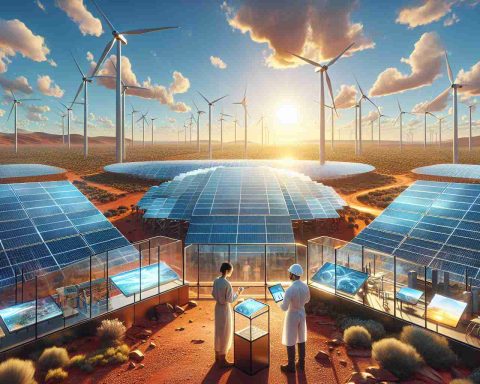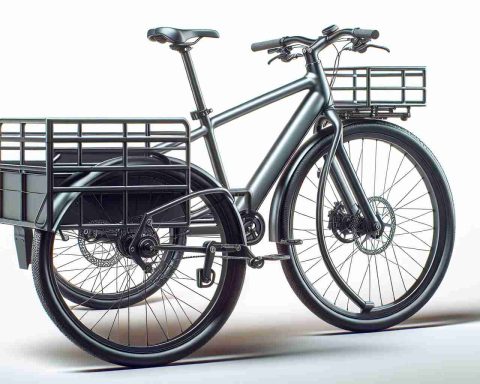- Energy Vault launches a significant 100 MW/200 MWh battery alongside a 119 MW solar farm in Horsham, Victoria, Australia.
- The project, initially planned for completion in 2025, now aims for a 2027 finish with a doubled battery capacity and a revised value of $370 million.
- State Electricity Commission (SEC) of Victoria supports this initiative, highlighting a strategic shift towards sustainable energy solutions.
- The battery will feature advanced grid-forming technology to ensure reliable power during peak demand.
- The project integrates innovative hybrid architecture, blending AC and DC configurations.
- Despite a $26 million quarterly loss, Energy Vault remains committed to clean energy innovation.
- Australia’s favorable market already supports contracts exceeding 2 GWh for Energy Vault.
- This venture marks Energy Vault’s first public partnership in Australia, aligning with governmental energy transition goals.
- The Horsham project exemplifies resilience and forward-thinking in the pursuit of a sustainable future.
Amidst the sprawling plains of Victoria, Australia, a new chapter in renewable energy unfolds. Energy Vault, an American trailblazer most famous for harnessing gravity in storage tech, now sets its sights on the robust horizons of big battery projects. Their newest venture, a substantial 100 MW/200 MWh battery, will emerge alongside a 119 MW solar farm in Horsham, marking an audacious step forward in sustainable power.
This project, audaciously adopted by the Victoria-government owned State Electricity Commission (SEC), underscores a dynamic shift in priorities. Initially pegged for completion in 2025, the new deadline stretches to 2027, but the ambition has only grown bolder: the battery’s capacity has doubled, inflating the project’s value to a remarkable $370 million.
Set to host cutting-edge grid-forming technology, this battery promises a steadfast power supply for peak demand periods. This innovative venture into hybrid project architecture and Energy Vault’s adept integration of AC-couple and DC-couple configurations brings a breath of fresh air into Australia’s energy landscape.
Despite grappling with financial challenges, including a recent $26 million quarterly net loss, Energy Vault persists, illustrating its commitment to pioneering clean energy solutions. Australia’s receptive market proves fertile, already hosting contracts exceeding 2 GWh before this latest landmark deal.
In the SEC Renewable Energy Park, the company finds symbiosis with governmental ambitions to drive Victoria’s energy transition. This collaboration not only represents Energy Vault’s first public partnership but symbolizes a leap toward a sustainable future.
As Energy Vault solidifies its presence Down Under, it etches itself not just as a player but as a visionary in the global march toward renewable energy. The Horsham project, a testament to tenacity and innovation, illuminates the path forward in the quest for a greener world.
Unveiling the Future: How Energy Vault’s Big Battery Project in Victoria is Revolutionizing Renewable Energy
Introduction
In the heart of Victoria, Australia, Energy Vault’s ambitious project is set to transform the landscape of renewable energy. By integrating a cutting-edge 100 MW/200 MWh battery with a 119 MW solar farm, this project represents a significant leap forward in sustainable power. Here, we delve deeper into the various aspects of this groundbreaking initiative, exploring the real-world applications, industry trends, and potential challenges, while offering actionable insights for stakeholders and enthusiasts of renewable energy.
How-To Steps & Life Hacks
Implementing a hybrid solar and battery storage system like Energy Vault’s involves several steps:
1. Assessment and Feasibility Study: Evaluate site-specific factors, such as solar irradiance, grid connectivity, and environmental impact.
2. Select the Right Technology: Decide between AC-coupled or DC-coupled systems based on energy needs and project size.
3. Secure Funding and Partnerships: Collaborate with local governments and secure requisite financing, as exemplified by Energy Vault’s partnership with the State Electricity Commission (SEC).
4. Regulatory Compliance and Permitting: Navigate through Australia’s Energy Market Operator regulations.
5. Implementation and Commissioning: Ensure installation by certified professionals and test rigorously before go-live.
Real-World Use Cases
The integration of energy storage with renewable sources offers numerous applications:
– Grid Stability: Provides ancillary services like frequency regulation and voltage support.
– Peak Shaving: Balances supply during periods of high demand.
– Renewable Smoothing: Mitigates the intermittency of solar power, ensuring a steady supply.
– Energy Arbitrage: Stores energy when prices are low and dispatches when demand spikes, optimizing financial returns.
Market Forecasts & Industry Trends
Renewable energy storage is expected to see exponential growth:
– Market Size: According to the International Renewable Energy Agency (IRENA), global energy storage capacity is predicted to expand 15-fold by 2030.
– Trend Toward Hybrid Systems: Hybrid projects linking renewables with storage, like Horsham’s, are increasingly popular due to improved reliability and cost-effectiveness.
Reviews & Comparisons
When comparing Energy Vault to competitors such as Tesla’s Megapack or Fluence’s Gridstack:
– Innovative Approach: Energy Vault emphasizes hybrid grid-forming technologies well-suited for large-scale projects.
– Market Share: Competitors like Tesla lead in established deployments, but Energy Vault’s unique gravity-based R&D and hybrid applications position it as an emerging competitor.
Controversies & Limitations
While the benefits of renewable integration are vast, challenges persist:
– Financial Risks: As noted, Energy Vault faces financial strains, evidenced by its $26 million quarterly net loss.
– Project Delays: Most large-scale projects, like the extended timeline to 2027, can encounter timeline revisions, impacting financial forecasts and operational plans.
Security & Sustainability
– Cybersecurity: As these systems interconnect with the grid, cybersecurity measures must be robust, involving encryption and real-time monitoring.
– Sustainability: Advanced battery systems must address lifecycle impacts, focusing on recyclability and sustainable materials sourcing.
Insights & Predictions
– Australia’s Energy Future: Industry growth in Victoria indicates a promising trajectory for more renewable-friendly initiatives, as it seeks to meet climate targets and embrace new technologies.
– Investment Opportunities: Rising demand for large-scale battery storage presents opportunities for investment in associated technologies and companies.
Tutorials & Compatibility
Energy management training can benefit local operators, ensuring familiarity with both legacy and innovative systems. Compatibility with existing infrastructure should be a key consideration during planning and design phases.
Pros & Cons Overview
Pros:
– Enhanced energy reliability and grid support.
– Reduction in carbon emissions.
– Long-term cost savings through operational efficiencies.
Cons:
– Initial high capital expenditure.
– Complexity in project execution and regulatory navigation.
– Financial vulnerabilities during project scale-up.
Actionable Recommendations
1. Stay Informed: Stakeholders should keep abreast of technology advances in hybrid systems and battery efficiency improvements.
2. Diversify Investments: Investors might consider diversifying across renewable and storage technologies to balance risk.
3. Community Engagement: Continuous dialogue with local communities is crucial to secure support and address environmental concerns.
For additional insights into the renewable energy landscape and related opportunities, visit IRENA and Australia’s Department of Industry, Science, Energy and Resources.
In conclusion, Energy Vault’s project in Victoria not only demonstrates innovation and foresight in renewable energy but also showcases the complexities and potential pitfalls that accompany such transformative efforts. With strategic implementation and management, such projects can significantly contribute to a sustainable energy future.















